Trimorphodon lyrophanes
—
California Lyresnake
Also known as:
Baja California Lyresnake
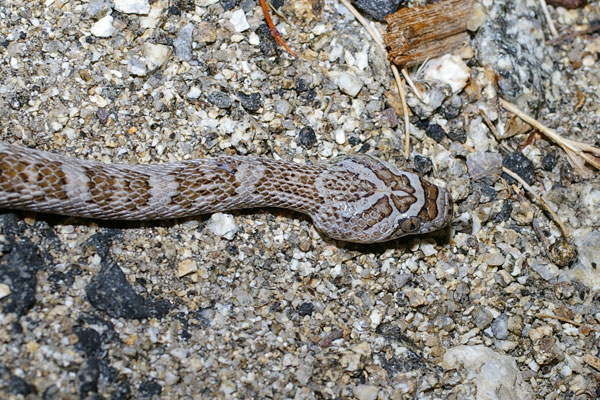
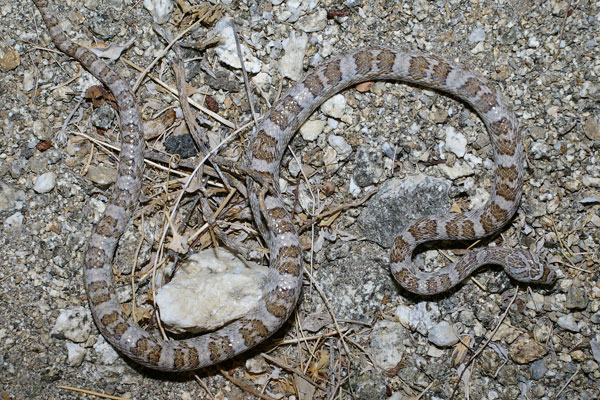
This was my final treat on a night of road-cruising for nocturnal reptiles. Earlier I had seen a Desert Glossy Snake, two Red Diamond Rattlesnakes, a Southern Pacific Rattlesnake, and a Desert Banded Gecko. I was driving through one promising area a final time when I spotted this large slender snake at the side of the road.
Lyresnakes are mildly venomous to humans, but they don't cause much trouble. For one thing, they are nocturnal and secretive, and so rarely seen by people who aren't out looking for them. But also, in the words of Philip R. Brown (author of A Field Guide to Snakes of California), lyresnakes would need "to chew for a considerable period to work the venom into a wound, and most people will not permit a snake to continue biting them for an extended period."
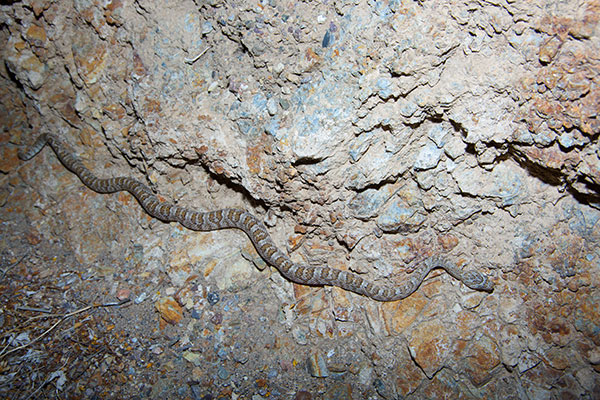
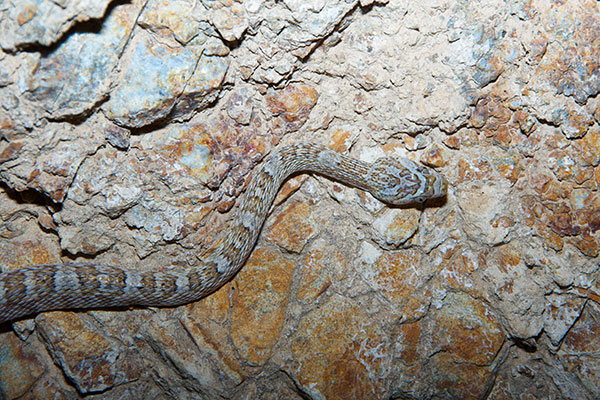
Lyre snakes are almost always found near rocks and boulders, as this one is trying to demonstrate.
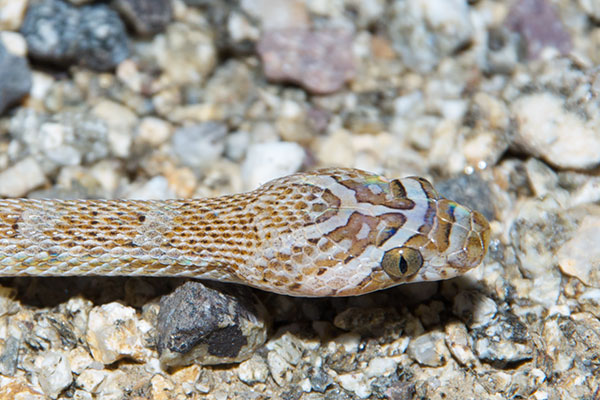
My what big eyes you have, grandma!
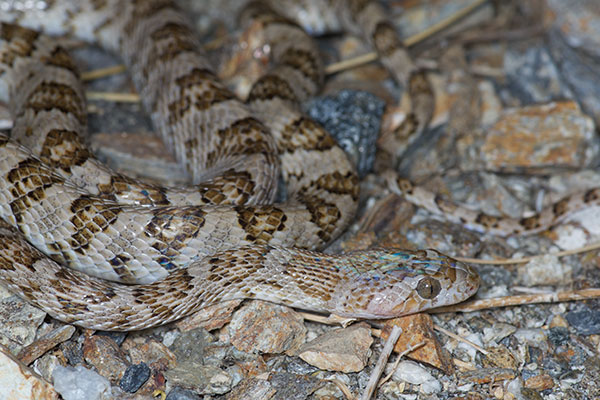
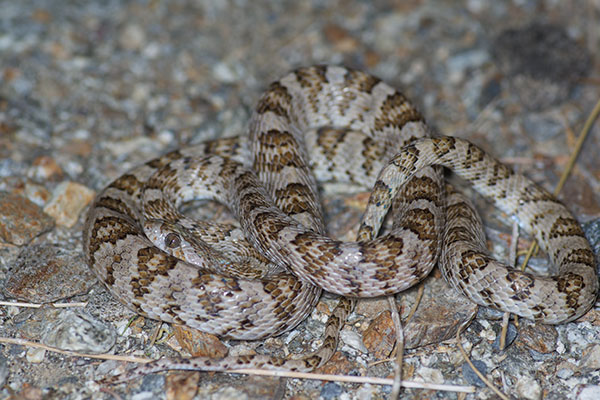
This is only the fourth wild lyresnake I've seen. All of them have been on the same road, in the same one or two mile stretch.
Online references:
Printed references:
- Bartlett, R. D., Tennant, A. 2000. Snakes of North America, Western Region
- Behler, J. L., King, F. W. 1979. The Audubon Society Field Guide to North American Reptiles & Amphibians
- Brown, P. R. 1997. A Field Guide to Snakes of California
- Crother, B. I. (ed.) 2017. Scientific and Standard English Names of Amphibians and Reptiles of North America North of Mexico, with Comments Regarding Confidence in Our Understanding, Eighth Edition
- Stebbins, R. C. 2003. Peterson Field Guide to Western Reptiles and Amphibians, Third Edition